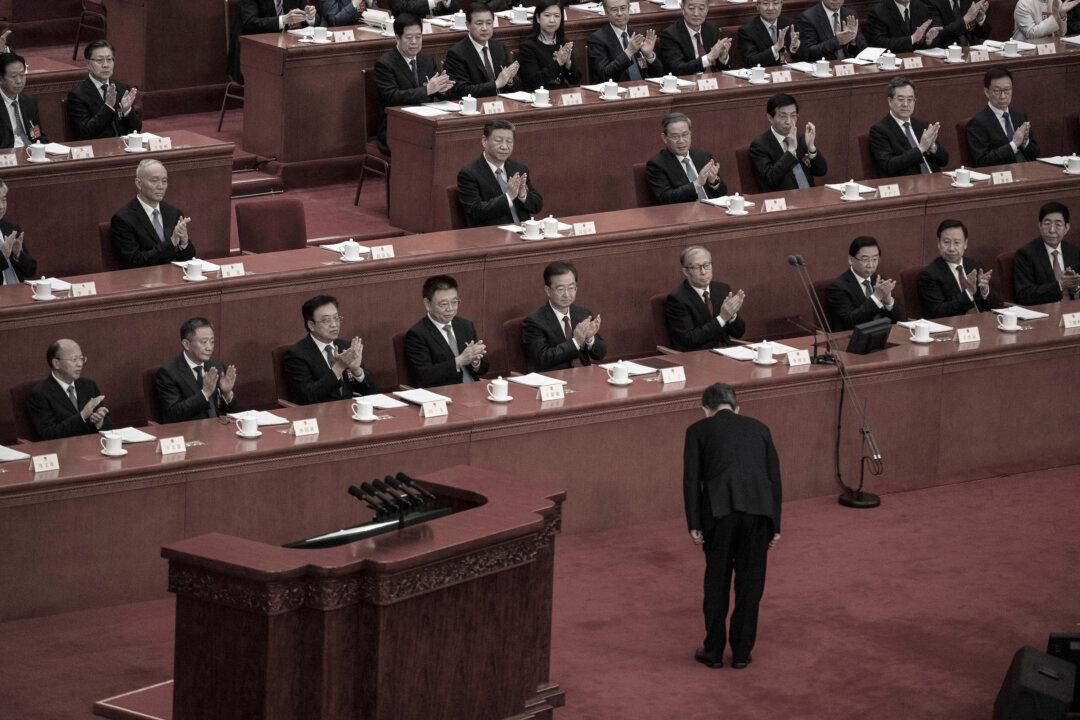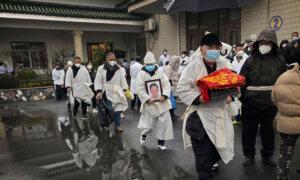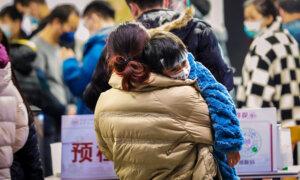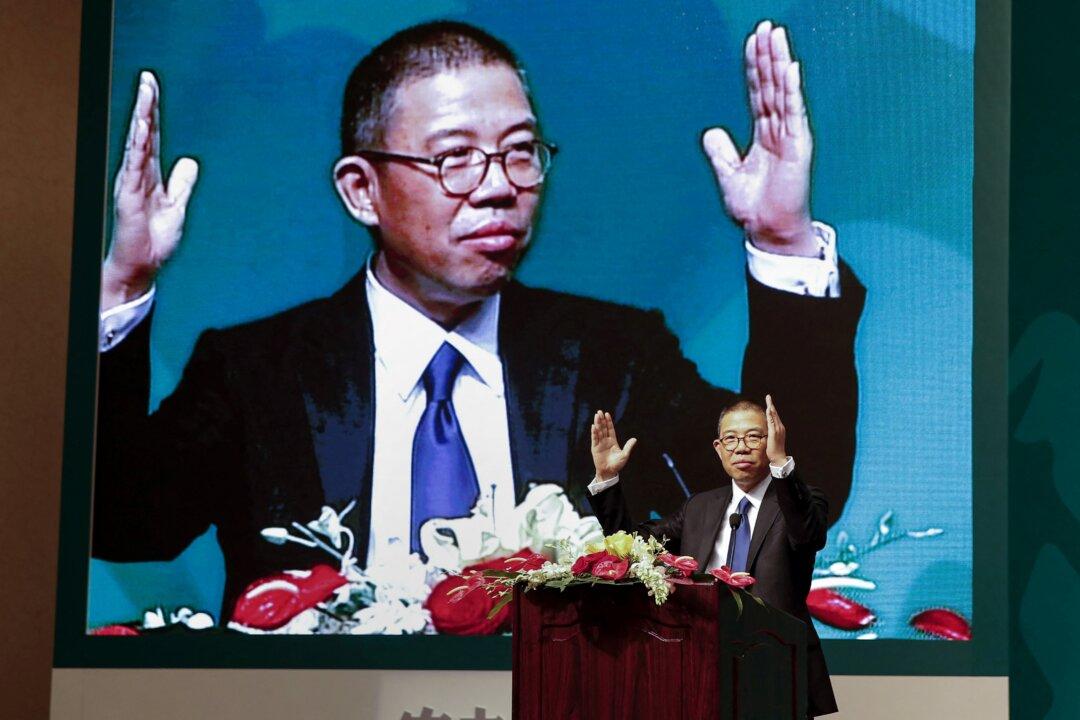Chinese leaders have required strict COVID-19 testing for themselves during the Two Sessions and visits from former foreign leaders. This is in contrast to ordinary citizens who spoke to The Epoch Times and said they were not even offered a COVID-19 test despite showing multiple symptoms.
On April 1, when Taiwan’s former president Ma Ying-jeou arrived in China for a visit, the reporters accompanying him were required to take four COVID-19 PCR tests by April 10, including two immediately prior to his meetings with Chinese leader Xi Jinping.
This testing requirement was also seen a month earlier when the Chinese Communist Party (CCP) held its two sessions, the Chinese People’s Political Consultative Conference (CPPCC) and the National People’s Congress (NPC), on March 4 and 5, respectively.
Both Hong Kong and Taiwanese media revealed that prior to the political meetings, more than 3,000 Chinese and foreign journalists were required to undergo COVID-19 PCR tests arranged by the Chinese authorities and submit a negative test result to be admitted to the venue.
A Hong Kong journalist complained in his article that he once again had to endure the throat swab, which made him feel like vomiting.
Inside the meeting hall, the staff and security guards all wore masks, but most of the CCP leaders and delegates did not.
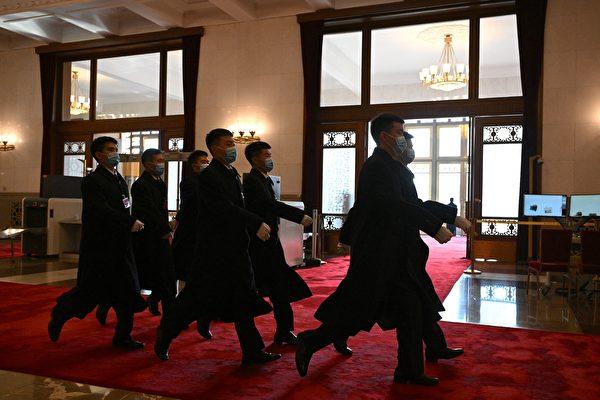
In contrast, COVID-19 testing booths across China have been idle for more than a year.
The testing requirements indicate that the authorities know the virus is still raging in China and are taking strict measures to protect themselves.
‘Hospitals are Full’
Zhang Yong (pseudonym), a resident of Wuhan, Hubei, told the Chinese language edition of The Epoch Times on April 8 that the authorities are blocking information and not disclosing the real situation.“Hospitals are full, and cases of heart attacks and strokes have become more common among younger people. There are a lot of deaths, but all are classified as normal deaths without revealing the real cause of their deaths. Occasionally, there are some online posts discussing the deaths, but they are soon removed from the Internet,” he said.
According to Dr. Liu, Many patients show vomiting and diarrhea symptoms. There have also been some patients who seemed fine the day before with mild symptoms but would suddenly die the next day. The hospital carries the bodies out in the middle of the night but not during the day for fear that the public will notice the spike in deaths.
He also revealed that his hospital has held several special meetings, and the president has warned the doctors not to admit those cases as COVID-19 cases. He added that no one was permitted to give a PCR test, and all the equipment for COVID-19 testing had been removed. “We can only make a diagnosis based on clinical symptoms.” It is the same all over the country, and all information on COVID-19 patients cannot be kept, he said.
Wu Jiani (pseudonym), a resident of Xiamen, Fujian Province, told the Chinese language edition of The Epoch Times on April 15 that she was diagnosed with COVID-19 on April 8.
Her symptoms included feeling discomfort in the throat, fever, chills, general weakness, and a headache.
Common Symptoms
Members of the Chinese public in various regions recently spoke to the Chinese language edition of The Epoch Times and said that COVID-19 infections are still common in their respective regions, and they all share common symptoms.Ms. Wu (pseudonym) said that she had repeated fevers and chills, followed by a sore throat, which felt like it was being cut by a knife, and aching limbs. One week after the onset of symptoms, she was still recovering from the disease, felt weak every day, and even found walking tiring.
Zhou Hua (pseudonym) from Ji'an City, Jiangxi Province, said that she was infected with the virus in March and that her main symptom was a sore throat.
“My throat hurt like as if I swallowed a razor blade,” she said. “And I had low-grade fevers, recurring fevers, sometimes coming one day and gone the next. I had aches all over my body and a pronounced pain in my neck.”
Later, her whole body felt numb, and she needed assistance to walk. She also did not have any appetite. When her symptoms suddenly worsened, she felt as if she were suffocating.
“At that time, I thought of my last words and cried all the time. Sometimes, when I woke up, my eyes wouldn’t open, and I couldn’t move my hands. I took many kinds of medicine before my symptoms subsided,” Ms. Zhou said.
Zhang Hao (pseudonym) from Kunming City, Yunnan Province, also said that his first symptom was a sore throat, followed by headache, backache, and finally body aches and a high fever. The sore throat and cough were the most painful symptoms he endured.
